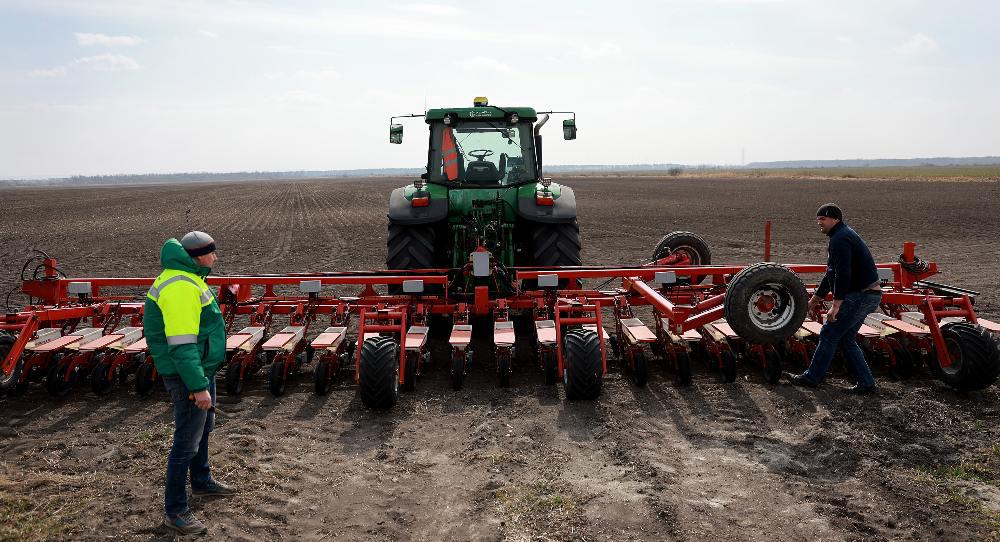It was similar to the early coronavirus weeks of March 2020. Consumers began stockpiling. Shoppers in Berlin were allowed to buy one packet of flour and one bottle of cooking oil.
Two years later, hoarding is back and, in some places, so are the restrictions. This time, the circumstances are different. Russia’s invasion of Ukraine has led to serious shortages, from fertilizers and cereals for agriculture to basic cooking products for households. Prices have risen sharply.
And, of course, there’s the energy issue, as if European governments hadn’t been warned over the years about the need to diversify energy sources in order to lower dependency on Russian gas and oil. And as if Europeans hadn’t been told about the need to save energy and, indirectly, given the rapid environmental degradation, to change a lifestyle that over the decades was taken for granted.
That lifestyle grew out of the European Steel and Coal Community—the precursor of today’s European Union. The founding fathers of that new Europe were determined to put behind centuries of war that had ravaged the continent and centuries of enmity between France and Germany. Post–1945 Europe would be based on peace, prosperity, and soft power.
Over the years, as Western Europe became wealthier, this part of the continent became comfortable. Its citizens took for granted the full shops, the regular vacations, the access to unlimited energy, and, of course, stability. Europeans could rely on the United States to provide security guarantees.
Even during the 1990s, when the war in former Yugoslavia led to tens of thousands of deaths and hundreds of thousands of refugees fleeing the violence and appalling destruction, the EU remained largely undisturbed.
The war in Syria was a different matter but was also not a catalyst for change in the European mindset. The idea of so many (non-European) refugees seeking safety in Europe shook some EU governments out of their complacency. Others built steel barriers along their borders. The European lifestyle wasn’t really affected—although far-right anti-immigrant parties used the influx of refugees to claim that Europe’s identity and culture was being threatened.
The war in Ukraine, by contrast, might just be the tipping point. A brutal invasion of the EU’s neighbor that has resulted in huge flows of refugees and is driven by Russian President Vladimir Putin’s imperialist goals raises many questions about the solidity of Europe’s security architecture. It is no longer predictably stable and secure, as the pressure on energy and food supplies grows. Europe is having to deal with Russia challenging the comfort zone.
EU leaders are rushing to reduce Europe’s dependency on Russian energy. They hadn’t learned from the many instances when Russia used energy as a geostrategic instrument. Now, Moscow could switch off the gas taps to Ukraine as a means of applying political pressure on the government in Kyiv, as it did during the early 2000s. It could reduce supplies to European gas facilities, as it did in late 2021.
While over the years, the European Commission was calling for a diversification of energy sources—with some limited success—Germany, the EU’s biggest economy, was increasing its dependence on Russian gas.
The construction of the Nord Stream 1 gas pipeline, which gave Russia the possibility to send gas to Germany directly via the Baltic Sea went against the EU’s policy of diversification. Nord Stream 2—now halted by German Chancellor Olaf Scholz—would have further increased that dependency.
As the Kiel Institute for World Economy recently noted, “Germany did not use the period after the Crimean crisis in 2014 for greater diversification in energy imports. Instead, the share of Russian natural gas increased to over 50 percent and there was no development of alternatives.”
The EU today imports 90 percent of its gas consumption, with Russia providing around 45 percent of those imports. Around 25 percent of oil imports and 45 percent of coal imports also come from Russia.
Despite this dependency, there is a growing consensus that Europe—and Germany in particular—can wean itself off Russian energy. And fast, even by 2024, according to Robert Habeck, Germany’s minister for economic affairs and climate action.
In the meantime, Berlin is seeking alternative sources. It already struck a gas deal with Qatar. And on his recent visit to Europe, U.S. President Joe Biden pledged to provide 15 billion cubic meters (bcm) of gas this year to Europe. The European Commission said it would work with EU member states to ensure demand for 50 bcm of U.S. liquefied natural gas every year until 2030.
Yet rushing to find alternative sources to Russian energy is not the only way to preempt shortages. European lifestyles could—and should—change.
The International Energy Agency recently published a succinct ten-point plan to reduce EU reliance on Russian gas. It argues that if measures were introduced during 2022, gas imports from Russia would be reduced by over one-third.
This could be achieved by introducing minimum gas storage obligations, expanding bio and nuclear energy, replacing gas boilers by heat pumps, and accelerating the deployment of new wind and solar projects.
And turn down the heat. The average temperature for building across the EU is above 22 degrees Celsius! “Turning down the thermostat for buildings’ heating by just 1°C would reduce gas demand by some 10 bcm a year”, states the IEA. Car-free Sundays would also be a welcome development.
As the Russo-Ukrainian war continues and prices increase, it will be up to leaders across Europe to communicate to their citizens what it all means for their comfort zone. “Clear communication between governments, industry and consumers” is essential to implement change, the IEA argues.
This has yet to happen. Leaders must explain why the current status quo is not sustainable.








.jpg)